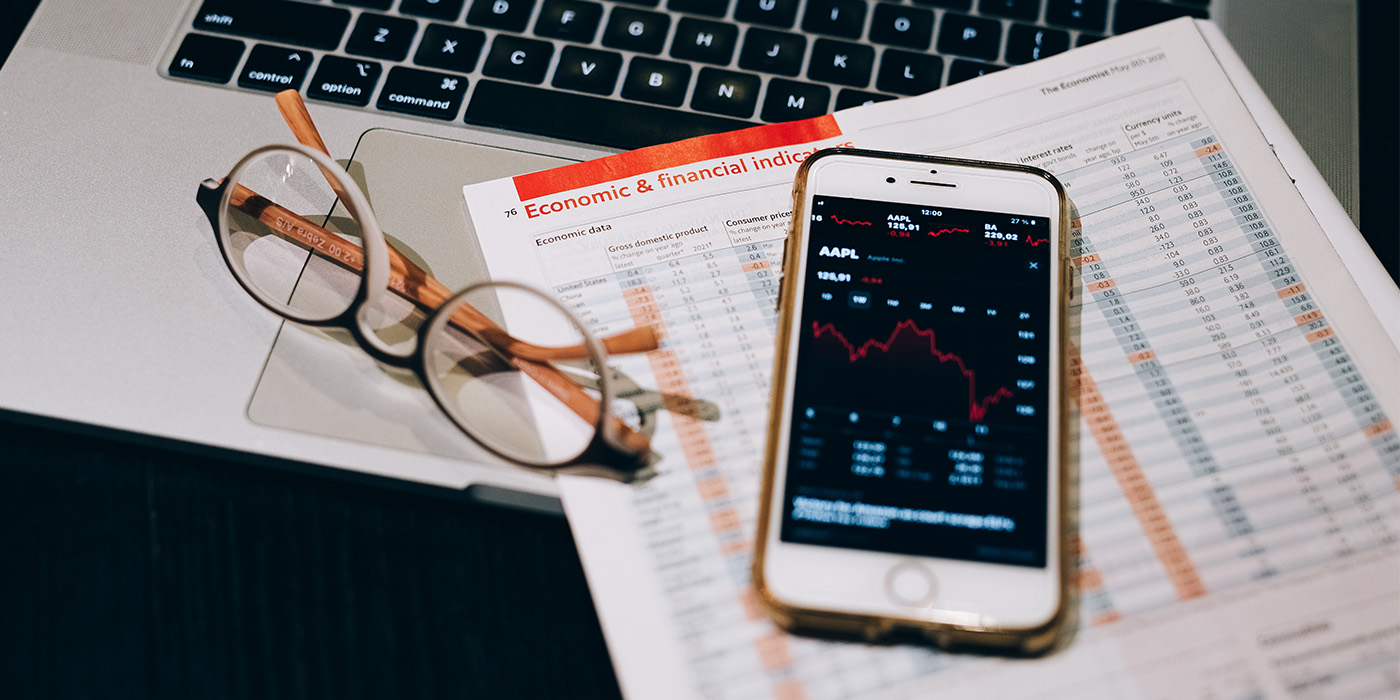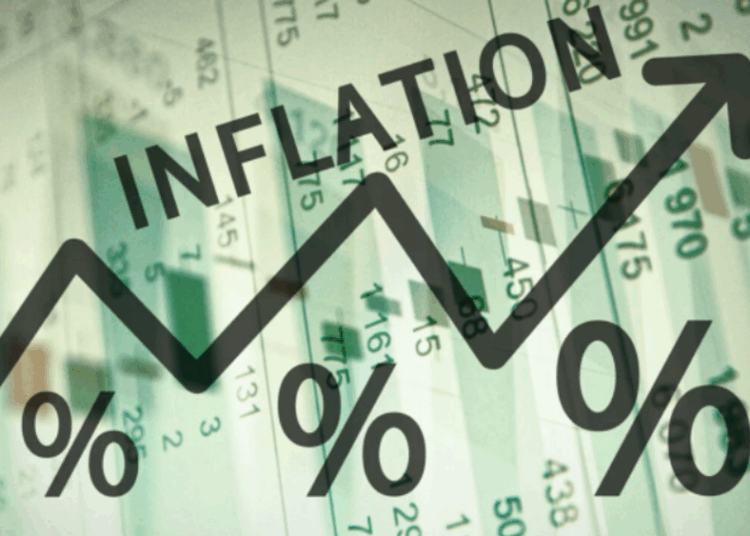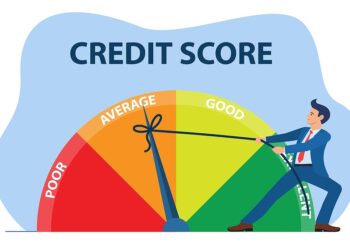Inflation is a word that echoes through news headlines, boardroom discussions, and increasingly, our kitchen table conversations. For many, it conjures images of rising prices at the grocery store, higher fuel costs, and the unsettling feeling that our hard-earned money just doesn’t go as far as it used to. This isn’t just an abstract economic concept; it’s a tangible force directly impacting your wallet, your savings, and your future financial security. Understanding inflation, what causes it, and how to effectively combat its corrosive effects is no longer just for economists – it’s essential for every individual and household.This comprehensive guide will arm you with the wallet wisdom needed to navigate inflationary periods. We’ll explore the fundamental causes of inflation, delve into its various impacts on personal finance, and most importantly, provide actionable strategies across different financial domains to help you not only protect your wealth but potentially grow it even when prices are climbing. This isn’t about magical solutions, but rather about smart, informed decisions that can make a real difference in your financial well-being.
What It Is and Why It Happens

Before we can fight inflation, we need to understand our adversary. Inflation is defined as the rate at which the general level of prices for goods and services is rising, and subsequently, the purchasing power of currency is falling. When inflation is high, your money buys less than it did before.
Several factors can contribute to inflationary pressures:
A. Demand-Pull Inflation
This occurs when there’s an excessive amount of money chasing too few goods.
- Strong Consumer Demand: When consumers have ample disposable income and confidence, they tend to spend more. If businesses can’t increase production quickly enough to meet this surge in demand, prices rise.
- Government Spending: Large government spending initiatives, especially if financed by printing more money, can inject significant liquidity into the economy, boosting demand.
- Easy Monetary Policy: Low interest rates encourage borrowing and spending by businesses and individuals, further stimulating demand.
B. Cost-Push Inflation
This type of inflation arises from an increase in the costs of producing goods and services.
- Rising Raw Material Costs: An increase in the price of essential inputs like oil, metals, or agricultural commodities can force manufacturers to raise their prices.
- Wage Increases: If labor unions or market forces lead to significant wage increases across industries, businesses may pass these higher labor costs onto consumers.
- Supply Chain Disruptions: Events like natural disasters, geopolitical conflicts, or pandemics can disrupt global supply chains, making it more expensive and time-consuming to transport goods, leading to higher prices.
- Higher Taxes/Regulations: Increased taxes on businesses or new regulations that raise operational costs can also contribute to cost-push inflation.
C. Built-in Inflation (Wage-Price Spiral)
This occurs when past inflation leads to expectations of future inflation, creating a self-fulfilling prophecy.
- Expectations: If workers expect prices to rise, they demand higher wages to maintain their purchasing power.
- Business Response: Businesses, facing higher labor costs, then raise their prices to cover these costs. This, in turn, fuels further demands for higher wages, creating a spiral.
D. Monetary Inflation
While often linked to demand-pull, this specifically refers to an increase in the money supply relative to the production of goods and services.
- Central Bank Policies: When a central bank significantly increases the money supply (e.g., through quantitative easing or by keeping interest rates very low for extended periods), there’s more money circulating in the economy. If the supply of goods doesn’t increase proportionately, the value of each unit of currency diminishes, leading to inflation.
How Inflation Impacts Your Wallet
Inflation isn’t just a number reported by statistical agencies; it directly erodes the value of your money. Its impact is pervasive, touching almost every aspect of your personal finances.
A. Eroding Purchasing Power
This is the most direct and noticeable effect.
- Reduced Buying Power: Every dollar you have today buys less tomorrow. This means your fixed income, savings, and investments lose value in real terms.
- Higher Cost of Living: Essential goods and services – food, housing, transportation, healthcare – become more expensive, squeezing household budgets.
- Impact on Savings: Money sitting idle in a low-interest savings account quickly loses its real value. If inflation is 5% and your savings account yields 1%, you’re effectively losing 4% of your money’s purchasing power each year.
B. Impact on Debt
The effect of inflation on debt can be a double-edged sword.
- For Debtors: If your income keeps pace with inflation, the real value of your fixed-rate debt payments (like a mortgage) decreases over time, making them easier to pay off.
- For Lenders: Conversely, lenders are disadvantaged as the money they receive back is worth less than the money they lent out.
- Floating-Rate Debt: For debts with variable interest rates, inflation often leads to higher interest rates, increasing your monthly payments and overall cost of borrowing.
C. Investment Performance
Inflation significantly influences the real returns on your investments.
- Fixed-Income Securities: Bonds, certificates of deposit (CDs), and other fixed-income investments are particularly vulnerable. Their fixed interest payments lose value, and their principal also erodes.
- Stocks: The impact on stocks is more nuanced. While some companies can pass on higher costs to consumers, others may see their profit margins squeezed. Growth stocks might be more vulnerable as their future earnings are discounted more heavily.
- Real Estate: Historically, real estate has often been seen as an inflation hedge, as property values and rents tend to rise with inflation. However, higher mortgage rates due to inflation can impact affordability.
D. Wages and Income
While some wages might adjust for inflation, many do not, leading to a decline in real income.
- Stagnant Real Wages: If your salary increases at a rate lower than inflation, your real purchasing power declines.
- Negotiating Power: Understanding inflation can strengthen your position when negotiating salary increases.
E. Retirement Planning
Inflation is a critical factor in retirement planning, as it impacts how much money you’ll need in the future.
- Underestimating Future Costs: If you don’t account for inflation, you might significantly underestimate the amount of money needed to maintain your desired lifestyle in retirement.
- Erosion of Retirement Savings: The purchasing power of your retirement savings (e.g., 401(k), IRA) can be severely eroded if not invested in inflation-beating assets.
Actionable Strategies to Combat Inflation

Now that we understand inflation’s mechanisms and impacts, let’s explore practical, actionable strategies to protect and even grow your wealth.
A. Adjusting Your Budget and Spending Habits
The first line of defense is often within your control: your budget.
- Identify Inflationary Hotspots: Pinpoint where prices are rising most rapidly in your budget (e.g., groceries, fuel, dining out).
- Cut Discretionary Spending: Look for areas where you can reduce non-essential expenses. This might mean fewer restaurant meals, reducing subscriptions, or delaying large purchases.
- Optimize Essential Spending:
- Groceries: Plan meals, buy in bulk when smart, utilize coupons and loyalty programs, and consider generic brands.
- Energy: Improve home insulation, use energy-efficient appliances, adjust thermostat settings.
- Transportation: Carpool, use public transport, combine errands, or consider fuel-efficient vehicles.
- Negotiate and Shop Around: Don’t hesitate to negotiate prices for services (e.g., internet, insurance) or shop around for better deals on goods.
- Embrace DIY: For some services, consider doing it yourself (e.g., home repairs, cooking at home) if feasible and safe.
B. Maximizing Your Income and Savings
Boosting your income and making your savings work harder are crucial.
- Negotiate Salary Increases: During inflationary periods, it’s vital to advocate for salary raises that at least match, if not exceed, the inflation rate. Research industry benchmarks and articulate your value.
- Explore Side Hustles: Consider taking on a part-time job, freelancing, or turning a hobby into a source of income to supplement your earnings.
- Skill Up: Invest in new skills or certifications that can increase your earning potential in your current role or open doors to higher-paying opportunities.
- High-Yield Savings Accounts: While not a complete inflation hedge, move your emergency fund and short-term savings into high-yield savings accounts (HYSAs) or money market accounts. These typically offer interest rates significantly higher than traditional savings accounts, though still often below the inflation rate.
- Certificates of Deposit (CDs): For money you won’t need for a specific period, consider laddering CDs. This involves investing in CDs with staggered maturity dates to take advantage of potentially rising interest rates.
C. Smart Investment Strategies During Inflation
Investing strategically is perhaps the most powerful tool to preserve and grow wealth during inflationary times. This requires a shift from traditional approaches.
- A. Real Assets: These are tangible assets that tend to hold or increase their value during inflation.
- Real Estate: Historically, real estate (both residential and commercial) has been a strong inflation hedge. Property values and rental income tend to rise with inflation. Consider Real Estate Investment Trusts (REITs) for diversified exposure without direct property ownership.
- Commodities: Raw materials like gold, silver, oil, and agricultural products often see their prices increase during inflationary periods. You can invest in commodities directly (futures contracts, though risky) or through commodity-focused ETFs.
- Precious Metals (Gold & Silver): Gold is often considered a traditional safe haven during economic uncertainty and inflation, as it tends to retain its value when fiat currencies decline. Silver can also perform well.
- B. Inflation-Protected Securities: These are specifically designed to shield investors from inflation.
- Treasury Inflation-Protected Securities (TIPS): Issued by governments, the principal value of TIPS adjusts with inflation, as measured by the Consumer Price Index (CPI). This protects your principal and future interest payments from inflation’s bite.
- C. Equities (Stocks): Not all stocks perform equally during inflation.
- Companies with Pricing Power: Look for companies that can easily pass on higher costs to their customers without a significant drop in demand. These often include companies with strong brands, essential products/services, or limited competition.
- Value Stocks: These are typically established companies with strong balance sheets and consistent cash flow, often trading at a discount. They may be more resilient than high-growth, speculative stocks.
- Dividend Stocks: Companies that consistently pay and ideally increase their dividends can provide a stream of income that helps offset inflation.
- Infrastructure and Utilities: Companies in these sectors often have regulated pricing models that allow them to adjust for inflation, making them relatively stable.
- D. Short-Duration Bonds: While long-duration bonds are vulnerable to rising interest rates (a common response to inflation), short-duration bonds are less sensitive.
- Less Interest Rate Risk: Their shorter maturity means you get your principal back sooner, allowing you to reinvest at potentially higher rates as interest rates rise.
- E. Diversification: Spreading your investments across various asset classes is always critical, but even more so during inflationary periods.
- Hedge Your Bets: A diversified portfolio helps cushion the blow if one asset class performs poorly due to inflation.
D. Managing Debt Wisely
Your approach to debt should also adapt during inflation.
- Prioritize Paying Down High-Interest, Variable-Rate Debt: Credit card debt, personal loans, or adjustable-rate mortgages become more expensive as interest rates rise in response to inflation. Focus on eliminating these first.
- Leverage Fixed-Rate Debt (Cautiously): If you have fixed-rate debt (like a traditional mortgage), the real value of those payments decreases as inflation erodes the value of money. This can be beneficial, but don’t take on new fixed-rate debt simply for this reason, as interest rates might already be high.
- Avoid New Unnecessary Debt: High inflation and rising interest rates make new borrowing more expensive. Be very judicious about taking on new debt, especially for depreciating assets.
E. Protecting Your Retirement Savings
Your long-term financial security depends on protecting your retirement nest egg from inflation.
- Review Your Asset Allocation: Ensure your retirement portfolio is adequately diversified and includes assets that traditionally perform well during inflation (e.g., real estate, commodities, inflation-protected bonds, strong dividend stocks).
- Increase Contributions: If possible, increase your contributions to your retirement accounts (401(k), IRA) to counteract the erosion of purchasing power. The power of compounding is even more important when fighting inflation.
- Consider Annuities (with inflation riders): Some annuities offer inflation protection, where payments increase over time, although they come with their own set of considerations and costs.
Advanced Wallet Wisdom
For those ready to dive deeper, several more nuanced strategies can be employed.
A. Dollar-Cost Averaging
This strategy involves investing a fixed amount of money at regular intervals, regardless of the asset’s price.
- Mitigating Volatility: During volatile periods (common with inflation), dollar-cost averaging helps reduce the risk of buying at the peak, as you buy more shares when prices are low and fewer when prices are high.
- Long-Term Strategy: This is a disciplined, long-term approach that can be particularly effective in building wealth over time, even with fluctuating market conditions.
B. Understanding Real vs. Nominal Returns
It’s crucial to differentiate between these two concepts.
- Nominal Return: The stated return on an investment (e.g., a stock increased by 10%).
- Real Return: The nominal return minus the inflation rate. This is your true gain in purchasing power. If your stock gained 10% but inflation was 7%, your real return was only 3%. Always focus on real returns to truly assess your financial progress.
C. Reviewing Insurance Coverage
Inflation can affect the adequacy of your insurance policies.
- Home Insurance: Property values and rebuilding costs rise with inflation. Ensure your home insurance coverage is sufficient to cover potential rebuilding costs, not just the original purchase price.
- Auto Insurance: The cost of vehicle repairs and replacements can increase. Review your coverage amounts regularly.
- Life Insurance: The amount of life insurance you have might need to be adjusted to ensure it provides sufficient purchasing power for your beneficiaries in the future.
D. Investing in Yourself
This is perhaps the best inflation hedge of all.
- Continuous Learning: Acquire new skills, certifications, or advanced degrees that make you more valuable in the job market. Higher demand for your skills translates to greater earning potential.
- Career Advancement: Focus on career paths that offer strong growth potential and regular salary adjustments.
- Networking: Building a strong professional network can open doors to better opportunities and higher-paying roles.
What Governments and Central Banks Do
While personal strategies are vital, it’s also helpful to understand how larger entities respond to inflation, as their actions will impact your environment.
A. Central Bank Actions (Monetary Policy)
Central banks (like the Federal Reserve in the US, Bank Indonesia in Indonesia) are the primary actors in fighting inflation.
- Interest Rate Hikes: The most common tool. Raising the benchmark interest rate makes borrowing more expensive, discouraging spending and investment, thereby cooling down demand and inflationary pressures.
- Quantitative Tightening (QT): Reducing the money supply by selling off assets accumulated during quantitative easing. This removes liquidity from the financial system.
- Communication (Forward Guidance): Central banks use their public statements to influence market expectations about future interest rates and economic conditions, which can help guide spending and investment decisions.
B. Government Actions (Fiscal Policy)
Governments can also play a role in managing inflation, though their primary tools are fiscal.
- Reduced Spending: Cutting government spending can reduce aggregate demand in the economy, helping to cool inflation.
- Increased Taxes: Raising taxes can reduce disposable income for individuals and businesses, thereby dampening demand.
- Supply-Side Policies: Governments can implement policies aimed at increasing the supply of goods and services over the long term, such as investments in infrastructure, education, or deregulation, which can alleviate cost-push pressures.
Conclusion
Inflation is a persistent economic phenomenon that demands a proactive and informed approach to personal finance. It’s a silent thief that can erode your wealth and compromise your financial goals if left unaddressed. However, by understanding its causes and implementing strategic measures, you can effectively mitigate its impact and even position yourself for growth.
The key to wallet wisdom in an inflationary environment lies in a multi-pronged strategy: diligently managing your budget, strategically investing in inflation-resistant assets, prudently handling your debt, and continuously investing in your own earning potential. It requires discipline, ongoing education, and a willingness to adapt your financial plan to changing economic realities.
By taking these steps, you’re not just reacting to economic forces; you’re actively taking control of your financial future, ensuring that your hard-earned money continues to work for you, no matter how the economic winds may blow. The fight against inflation begins with knowledge, and ends with financial resilience.












